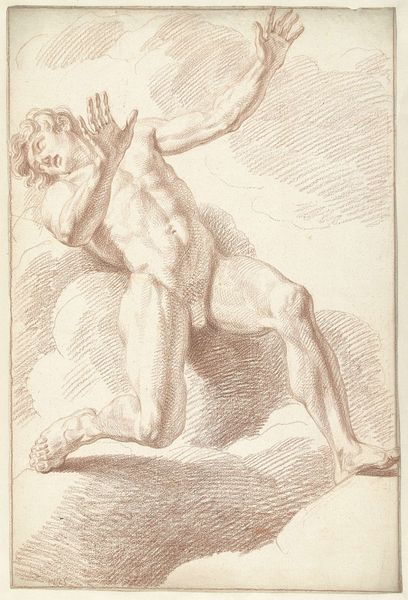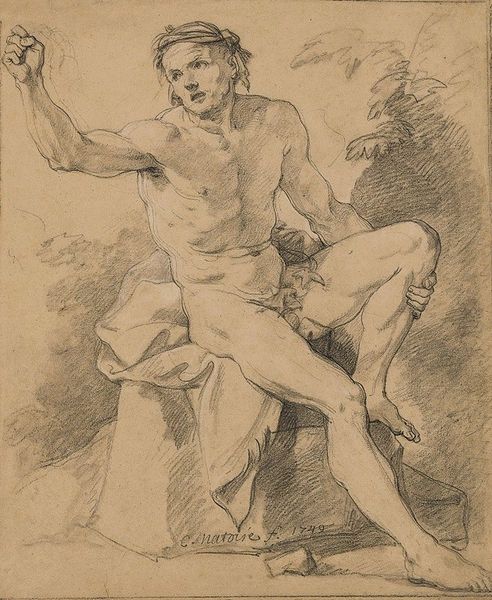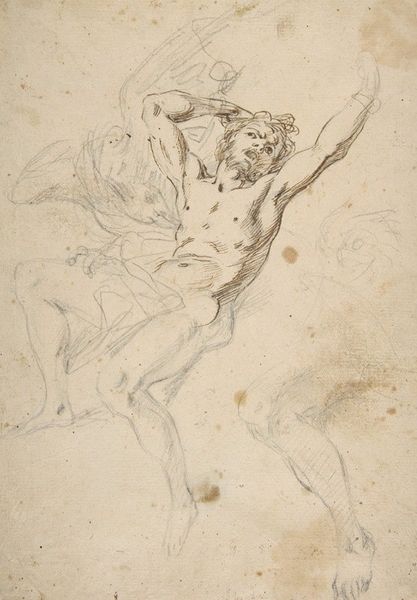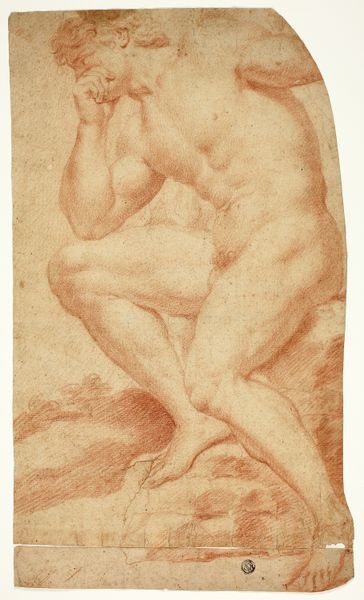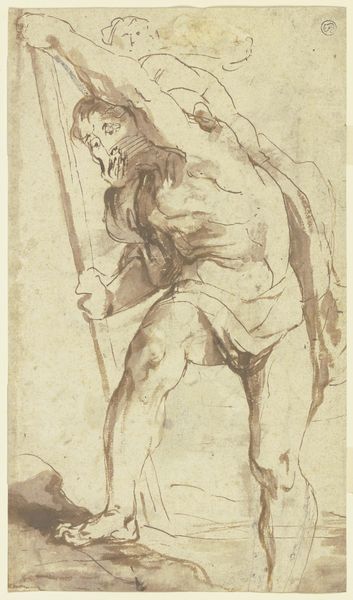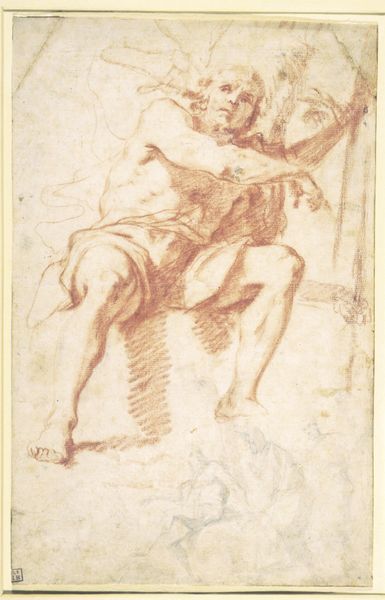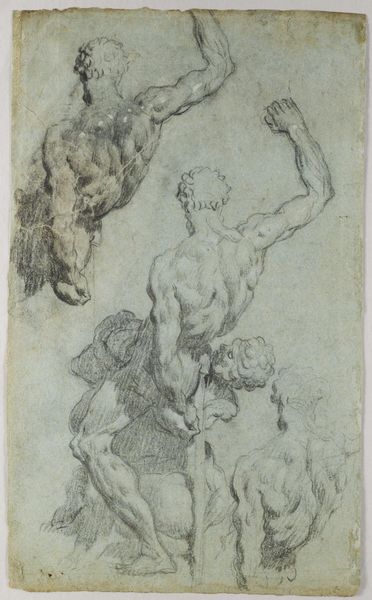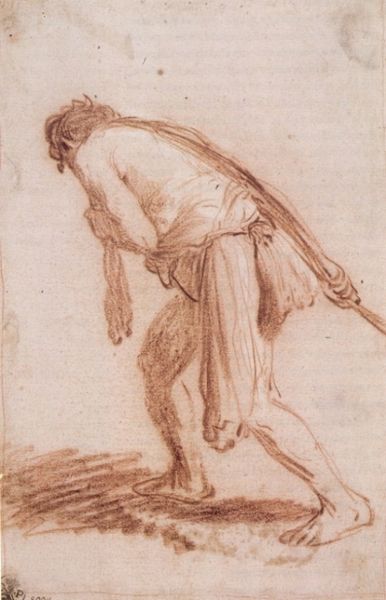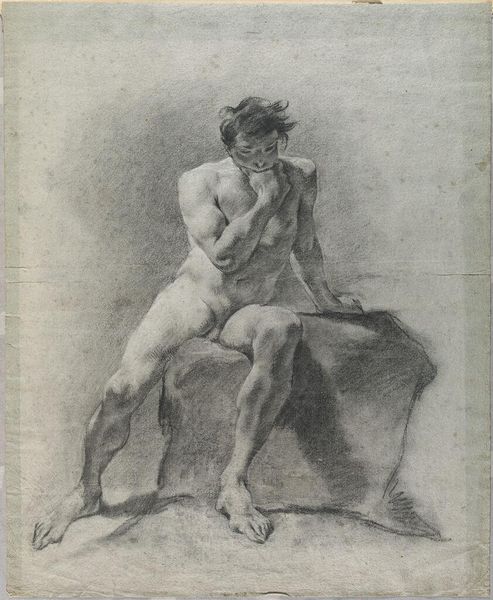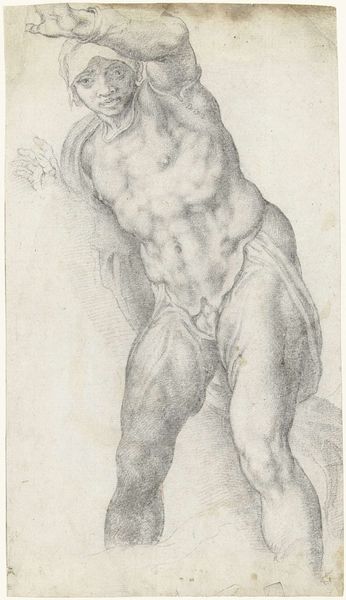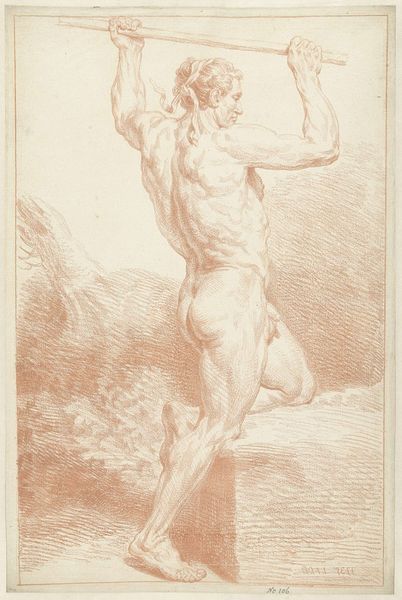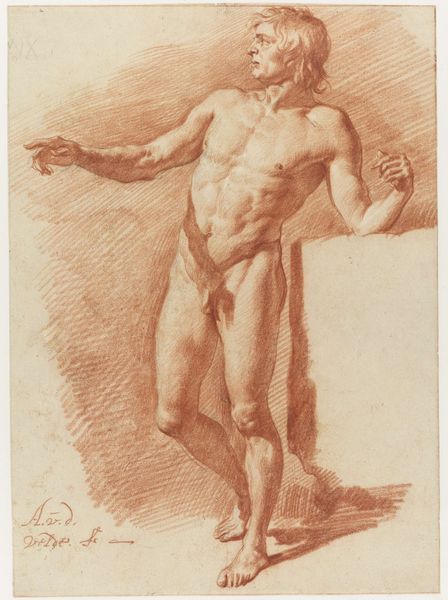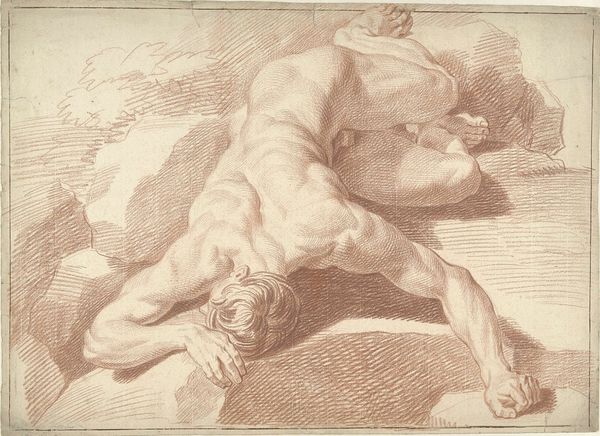
drawing, dry-media, charcoal
#
drawing
#
charcoal drawing
#
figuration
#
dry-media
#
charcoal
#
history-painting
#
academic-art
#
nude
Copyright: Public Domain: Artvee
Editor: This drawing, "Study of the figure of Aeolus, and a study of his hand," was created by Charles-Joseph Natoire in 1799 using charcoal. The figure seems both powerful and contemplative. What strikes me most is the artist's use of line and the raw texture of the charcoal. How do you approach understanding this piece? Curator: I focus primarily on the intrinsic pictorial values: Natoire's economy of line, for example, suggests the musculature with impressive efficiency. Notice how the shading, applied with varied pressure, gives volume to the figure and differentiates planes. The foreshortening of the leg is particularly adept. Observe also the way Natoire has constructed the figure; the weight seems grounded and naturalistic despite the implied heroic context. How might you describe the compositional strategy? Editor: I'd say there is a deliberate tension between the detailed study of the torso and the more gestural rendering of the limbs and drapery. The contrast guides the eye to the emotional center. The second, smaller study draws focus to the expressive qualities of Aeolus' hand. I’m fascinated by the layering of lines. How do you see that choice functioning? Curator: Indeed. The layering and hatching do more than merely describe form; they generate a certain atmospheric quality, a sense of dynamism that invigorates what might otherwise be a purely academic exercise. Consider also the negative space surrounding the figure. Its shape is active; it creates visual tension and enhances the monumentality of the drawing. Editor: That’s a new perspective for me. Seeing it that way makes me realize how intentionally the artist chose the blank space. Curator: Yes, every stroke, every choice of medium, every deployment of space is significant. Careful consideration reveals the artistic merit here. Editor: I agree. Now I'm really beginning to see how much a drawing such as this can express.
Comments
No comments
Be the first to comment and join the conversation on the ultimate creative platform.
